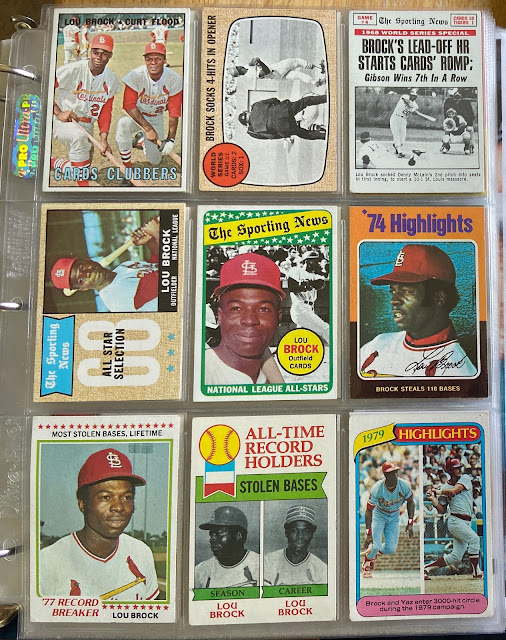 Today would have been Stan "the Man" Musial's 100th birthday. The following is adapted from a post I wrote elsewhere when Musial received the Presidential Medal of Freedom, the highest honor that can bestowed upon
an American civilian.
Today would have been Stan "the Man" Musial's 100th birthday. The following is adapted from a post I wrote elsewhere when Musial received the Presidential Medal of Freedom, the highest honor that can bestowed upon
an American civilian.
"Here stands baseball's perfect warrior. Here stands baseball's perfect knight."
-- Ford C. Frick, former Commissioner of Baseball.
Growing up a a baseball fan in St. Louis, we were blessed to have many Cardinals greats as heroes. But there was one hero who stood out above them all, and that one, of course, was Stan Musial. Even for someone like me, who was born after Musial retired, he was still unquestionably "The Man."
 Once I was at a breakfast meeting for work. After we had ordered our food, in walked Stan the Man, who sat down at the table next to us. His food came almost immediately, a good five minutes before ours. Nobody minded.
Once I was at a breakfast meeting for work. After we had ordered our food, in walked Stan the Man, who sat down at the table next to us. His food came almost immediately, a good five minutes before ours. Nobody minded.I actually got to spend a little bit of time with him on another occasion. I had my mom's old 45 RPM record (if you're under the age of 35 or 40, ask your parents what those are) of the 1961 song Stan the Man by Steve Bledsoe and the Blue Jays. You can listen to the song below and that of course is the 45 shown above, pictured with a postcard of Musial's Hall of Fame plaque.
I had always thought it would be great to get the 45 autographed. Though he quite often signed in public for no charge, he eventually set up a company named Stan the Man, Inc. through which he sold autographs. I called them one day and asked about getting the record signed. When they said I could mail it to them, I was leery about sending it, so I asked if I could drop it off. They agreed that this would be no problem, and since it wasn’t far from my office, I headed over there one day during my lunch break.
When I got there, the guy I spoke with said, "Stan's actually in back signing things. Why don't you just come back and have him sign it now?" To say that I was thrilled would be an understatement! He turned out to be every bit as kind as his reputation suggested, and we spent about fifteen minutes talking, mainly about the Cardinals' season which had just finished. The event will forever be a cherished memory.
Of course, Stan Musial was not just a great guy. He was also one of the greatest baseball players of all time. He possessed my favorite statistic in all of sports: Of his 3630 career hits (fourth best of all time), exactly 1815 were at home, 1815 were on the road. What a testament to his consistency! When he retired, he held 17 major-league records, 29 National League records, and nine All-Star Game records. Many of those records have since been eclipsed, but to Cardinal fans, he will always be "the Man."
Bonus Musial Trivia: Musial's final hit was against the Cincinnati Reds. It was a single past the Reds' rookie second baseman, one Peter Edward Rose. Nearly two decades later, Rose would break Musial's National League record for hits in a career.
More Bonus Musial Trivia: Not only does Musial share a birthday with fellow Hall of Famer, Ken Griffey Jr., but (amazingly!) they were both born on November 21st in Donora, Pennsylvania, a town with a population of less than 5000 people.












































